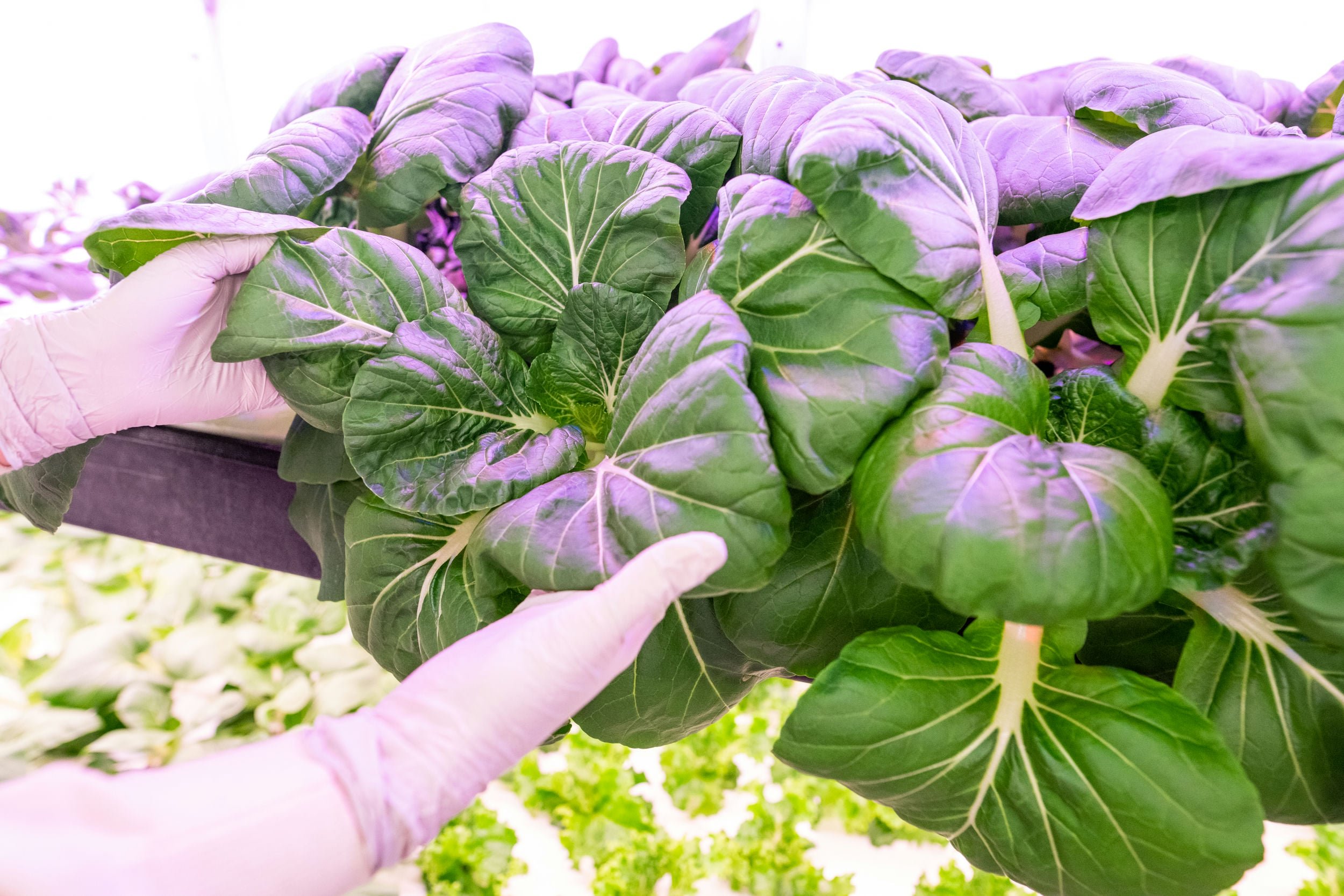
The Growcer Blog
Read our blog which covers everything to do with container farming in Canada, from hydroponics to how the vertical farming technology is being used to promote food sovereignty.
What to grow in a vertical farm: R&D Recommended
From what makes the most sense financially, to the characteristics of leafy green vegetables themselves, there are a few good reasons why lettuces, herbs, and the like are the gold standard for hydroponic crops. Since October 2020, R&D investigated a wide range of crops in the leafy greens category to see what grows best in Growcer’s Osiris farm.
Why grow leafy greens?
Hydroponic farms are mainly used to grow leafy greens - but what makes this so great?
How has vertical farm design changed over the years?
See the progression of the Growcer Osiris vertical farm and the reasons behind the improvements.
Research Summary: How many hours does it take to operate a vertical farm?
Our in-house R&D team busted out the stopwatches to calculate - down to the minute - how many hours a week does it really take to operate a vertical farm?
Why Growcer doesn’t build vertical farms using shipping containers
We don’t use shipping containers. We used to. So here’s what we learned when we switched from shipping containers to custom-built, modular farms and why that matters for you.
Q&A With A Head Grower
Go behind the scenes with a head grower to see what a typical day is like and the biggest misconception they receive about the work they do.
What’s the ROI on vertical farming?
Let’s cut to the chase - size matters. It’s the age-old argument of quality over quantity. And your customers (and retailers) care about quality, not just how many units you can move. Better understand what is meant by “commercially viable yields” and what it means for your distribution planning.
Research Summary: Spinach Trials
Spinach germination is commonly lower and slower than Growcer’s other traditionally grown crops. Low spinach germination can impact overall yield and health of the crop, leading to wasted resources. We investigated germination rates and seedling growth of four spinach cultivars to determine which ones had higher and consistent germination rates.
Product Spotlight: Building an accessible vertical farm
Current vertical farming technology is often narrow, tall, and can be a challenge to navigate, but industry modifications can unlock employment opportunities for operators living with disabilities and help make vertical farming more accessible to all. Growcer partnered with the Reena Foundation and the Rick Hansen Foundation to develop the first accessible modular vertical farm in Canada and here’s a look behind the scenes.
Vertical Farming and Accessibility
Vertical farming has the potential to revolutionize food production, but it's important to ensure it is accessible to everyone in a community.
Hydroponics 101
We tend to think of plants growing outside with sunlight and soil, but other ways of getting light and nutrients are just as viable for plant growth. That’s where hydroponics growing comes in because hydroponics is growing plants in nutrient-rich water, without soil.
Is a food box program right for you?
CSAs work best for small to medium sized food producers who want to sell their product directly to customers. A CSA model allows you to develop strong local relationships, has low startup costs, good margins, and is a growing service. Read to learn more about considerations and marketing tips to see if Community Supported Agriculture is a fit for you.
Fact vs. Fiction: How to Choose a Vertical farm provider
How to assess your modular farm provider by understanding what’s important when it comes to structure, yields, hydroponic set ups, and operator experience.
Comparing hydroponic setups: DWC vs. NFT
The type of hydroponic growing system matters most when you’re comparing different types of vertical farms. There’s many types of hydroponic farming systems like nutrient film technique (NFT), deep water culture (DWC) and ebb and flow. By the end of this blog, you’ll better understand the different types of systems and their advantages and disadvantages for you as an operator.
Horizontal vs. Vertical Stacking in Hydroponic Farms
You’re picking a modular farm and you notice plants are vertical in one farm and horizontal in another model. Does this matter? Will it impact your yields, profitability, or operator experience? Read more to find out.
All About Yields
Growing slots. Heads. Pounds per square meter. Units. Better understand how to compare yields across equipment suppliers and discern what your reality will be once you start growing.
Container Farms: Are they all created equal?
Are they all created equal? The definitive guide for comparing container and vertical farming methods. Learn fact from fiction and understand your controlled environment agriculture choices.


















